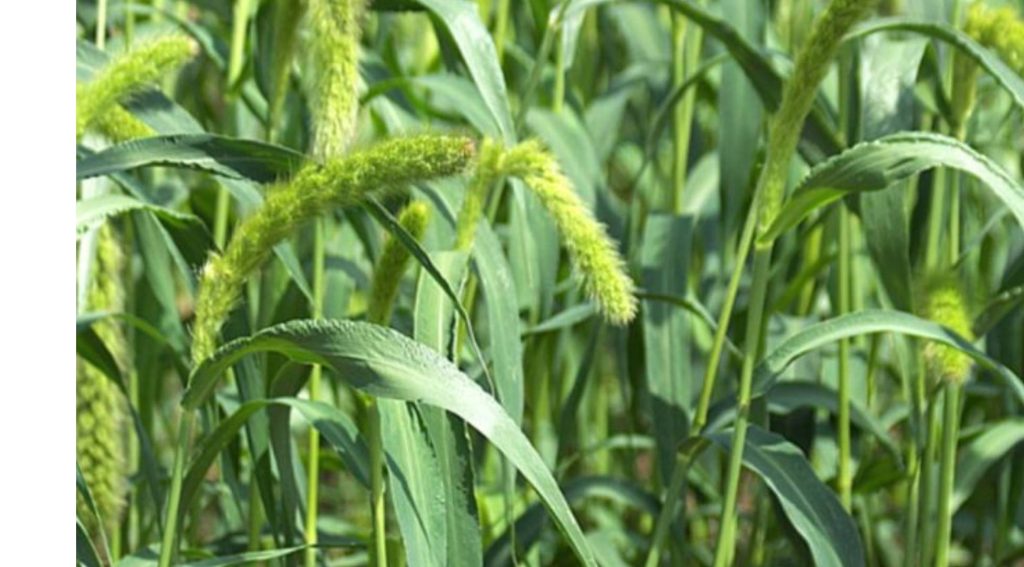Uttarakhand’s native millets are almost extinct. Rice and wheat are showing declining yields, as is potato, while spices like turmeric and chili are gaining acreage in the hill state, according to a recent study of decadal agricultural trends in the state.
The study by Climate Trends captures the changing agricultural landscape in the hills of Uttarakhand in the last decade through an assessment of the yields and area under cultivation of some of its major cereals, pulses, oilseeds, and vegetables between 2012 and 2021.
It shows that in recent decades, the impacts of climate change in the form of heat and moisture stress on crops have been disrupting the agricultural practices in the hill districts of Uttarakhand. The state has seen a decline in total agricultural area (comprising cereals, pulses, and oilseeds) in the hills by 27.2%, and overall yield has fallen by 15.2% between 2012 and 2021. Agriculture’s share in Uttarakhand’s Gross State Domestic Product (GSDP) has declined from 11.5 percent in 2011–12 to just 8.8 percent in 2021–22.
Wheat, paddy, finger millet, and barnyard millet experienced the steepest declines in area and yield between 2012 and 2021, declining more rapidly in the second half of the decade. Maize and amaranth (ramdana) saw 5.9% and 5.6% increases in yield in the same period.
GI-tagged products—pigeon pea (toor), horse gram (gahat), chickpea (chana), black soybean (bhatt), and black gram (urad)—have increased in yield and area under cultivation in the last decade.
Potatoes, the state’s largest vegetable crop, show a 70.82% decline from 367,309 metric tons in 2020-21 to 107,150 metric tons in 2023-24. The area under cultivation has declined by 36.4 percent in just two years.
With 92 percent of its landscape covered by rugged mountains, the state is also vulnerable to weather extremes. The changing patterns of agricultural production in the state of Uttarakhand can be partially attributed to its rapidly warming climate in addition to socio-economic constraints, cultural preferences, market fluctuations, etc.
Native millets almost extinct
Uttarakhand was once home to a rich repository of agrobiodiversity with over 40 indigenous millets and coarse cereals, many of which are nearing extinction. Repeated crop failures from erratic monsoons and lighter snowfall are discouraging farmers from cultivating local millet varieties like foxtail millet and flaxseeds. Barnyard and finger millets are also declining in production across the state. They have witnessed significant decline in area under cultivation and yields.
According to analysis by Climate Trends, the average temperature in Uttarakhand increased by 1.5°C from 1970 to 2022, with greater warming at higher altitudes. Over the last century, there has been a significant fall and variability in average annual rainfall in Uttarakhand, with hill districts becoming drier. High-intensity rainfall extremes of shorter duration continue to loom large.
In the past 20 years, winter temperatures at high elevations of the state have increased at the rate of 0.12°C/decade. Precipitation has fallen by 11.2 mm per decade, potentially affecting rabi crops. During monsoons, rapid and large runoff from hill slopes results in soil loss of 40 tons/ha/year. At the same time, there has been an overall reduction in the discharge rate of stream and spring water sources, critical for year-round water supply both for agriculture and the domestic needs of villagers in the state.
According to India’s Atlas on Weather Disasters, in 2023 the state witnessed 94 days of extreme weather, destroying 44,882 hectares of farmland. Dwindling agricultural prospects have also led to widespread out-migration from the hills to the plains, which could also explain the shrinking area under agricultural production in the last decade.
Research indicates that the yield of paddy in Uttarakhand has decreased due to insufficient rainfall at the time of transplantation, while warmer winters and reduced winter rainfall have affected wheat production. Extreme rainfall events erode topsoil productivity and damage standing crops. Rising air temperatures increase crop evapotranspiration, thus increasing water demand for crop production to maintain optimal yield.
The study concludes that the path to climate resilience lies in traditional practices of multi-cropping. The now obsolete traditional Barahnaja system is an indigenous, climate-resilient multi-cropping method from Uttarakhand. In this system, farmers grew 12 diverse crops involving grains, pulses, millets, oilseeds, vegetables, and medicinal herbs in a single field, enhancing soil fertility, biodiversity, and food security while reducing the risk of crop failure. However, despite dependence on paddy-wheat monocropping systems, farmers continue to practice multi-cropping with one or two pulses and millets sown in the same field.
Climate resilient cropping
Indigenous crop varieties of Uttarakhand show tremendous resilience in the face of climatic stressors: Despite the decline in cereal yields, the rise in production of native GI-tagged pulses like pahari toor daal, gahat (horse gram), and bhatt (black soybean), urad, and millets like amaranth (ramdana) signals a positive shift towards climate-resilient farming aimed at coping with the heat and water stress in the hills.
Intercropping or crop rotations with pulses have a higher soil carbon sequestration potential than paddy/wheat monocrop systems. Their low water footprint, drought tolerance, and ability to grow in poor soils make pulses a cornerstone of sustainable hill agriculture in a warming world.
Conversations with Krishi Vigyan Kendras in Bageswar and Uttarkashi revealed that they have introduced drought-tolerant varieties of pigeon pea to deal with prolonged dry spells. Pulse crops are good for areas with less rainfall; short-duration crops like moong, chana, and urad are promoted among farmers to cope with delayed monsoons.
The area under spice cultivation in the state of Uttarakhand as a whole has increased by 50 percent, and yield has increased by 10.5 percent between 2016 and 2022. Field interviews indicate that among spices, turmeric and chili have seen tremendous growth due to their market returns and immunity to animal attacks. Areas under turmeric and chili cultivation show linear growths of nearly 112 percent and 35 percent, respectively. Their corresponding increase in yields is 122.5 percent for turmeric, which showed a dramatic spike in 2022 following consistent growth between 2016 and 2020. Chili yields increased by 21 percent between 2016 and 2022. Both chili and turmeric require warm, humid conditions but are adaptable to soil varieties and wide temperature ranges.













